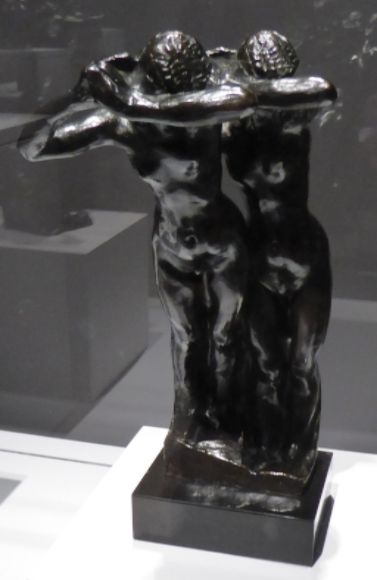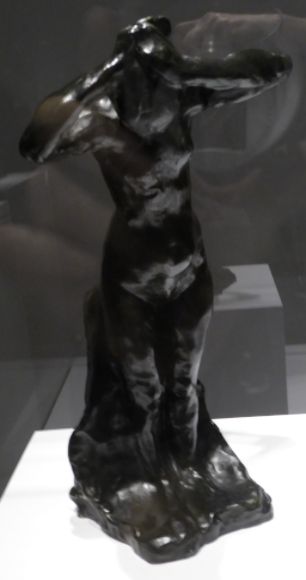Auguste Rodin (1840-1917) is generally considered to be one of the founders of modern sculpture. While traditional sculpture prior to Rodin tended to be decorative, formulaic, or thematic, Rodin portrayed the human body with realism and celebrated individual character and physical features. Rodin was considered a naturalist who focused on character and emotion rather than on monumental expression. During his life, his works were often criticized and were somewhat controversial.
While Rodin showed artistic talent at a young age, he was a poor student. He attended the Ecolé Impériale Spéciale de Dessin et de Mathématique where he learned modeling and drawing. He applied to get in to the noted Ecole des Beaux-Arts and was rejected three times. Humiliated by this failure, Rodin went to work for commercial decorators and sculptors. However, he had a compulsion to sculpt and opened his own studio.
Rodin spent six years in Belgium during which time he journeyed to Italy to visit the fourth Michelangelo centennial. Rodin began to depart from the accepted style of French sculpture, focusing on investigating the human form as a vehicle to express human emotion.
The Portland Art Museum recently presented a special exhibit: Rodin: The Human Experience—Selections from the Iris and B. Gerald Cantor Collections. This exhibit displayed 52 bronzes by the groundbreaking French sculptor Auguste Rodin. The exhibition was staged to commemorate the 100th anniversary of the artist’s death. Shown below are some of Rodin’s sculptures of women.
 Shown above: Aphrodite. Modeled about 1888.
Shown above: Aphrodite. Modeled about 1888.
 Shown above: The Metamorphoses of Ovid. Modeled about 1885-89.
Shown above: The Metamorphoses of Ovid. Modeled about 1885-89.
According to the display:
“Nineteenth-century Romantic artists explored many themes that had been previously taboo. One of these was lesbianism.”

 Shown above: Toilette of Venus and Andromede. Modeled after 1890.
Shown above: Toilette of Venus and Andromede. Modeled after 1890.
According to the display:
“In today’s parlance we might call Rodin the super recycler. Throughout this exhibition are works created by his recycling of parts from earlier pieces, as well as works that would later become sources for parts in subsequent pieces.”
 Shown above: Three Faunesses. Modeled before 1896.
Shown above: Three Faunesses. Modeled before 1896.
According to the display:
“What appears to be three mythological creatures joined in a circle is actually a single figure cast three times and then brazed together.”

 Shown above: Damned Women. Modeled about 1885. This work was never shown during Rodin’s lifetime as it was felt that a woman who might be predisposed to make love to another woman would be encouraged by this work.
Shown above: Damned Women. Modeled about 1885. This work was never shown during Rodin’s lifetime as it was felt that a woman who might be predisposed to make love to another woman would be encouraged by this work.
 Shown above: The Night. Modeled after 1898.
Shown above: The Night. Modeled after 1898.
 Shown above: Standing Female Combing her Hair. Modeled after 1898.
Shown above: Standing Female Combing her Hair. Modeled after 1898.

 Shown above: Tragis Muse. Modeled in 1894-96. This was originally created for his monument to Victor Hugo.
Shown above: Tragis Muse. Modeled in 1894-96. This was originally created for his monument to Victor Hugo.
More Rodin photo diaries:
Museums 101: Auguste Rodin in the Portland Art Museum (Photo Diary)
Museums 101: Torsos and Hands by Rodin (Photo Diary)
Museums 101: Rodin's Heads (Photo Diary)
Museums 101: Rodin's Late Drawings (Photo Diary)
Museums 101: The Lost-Wax Bronze Casting Method (Photo Diary)


